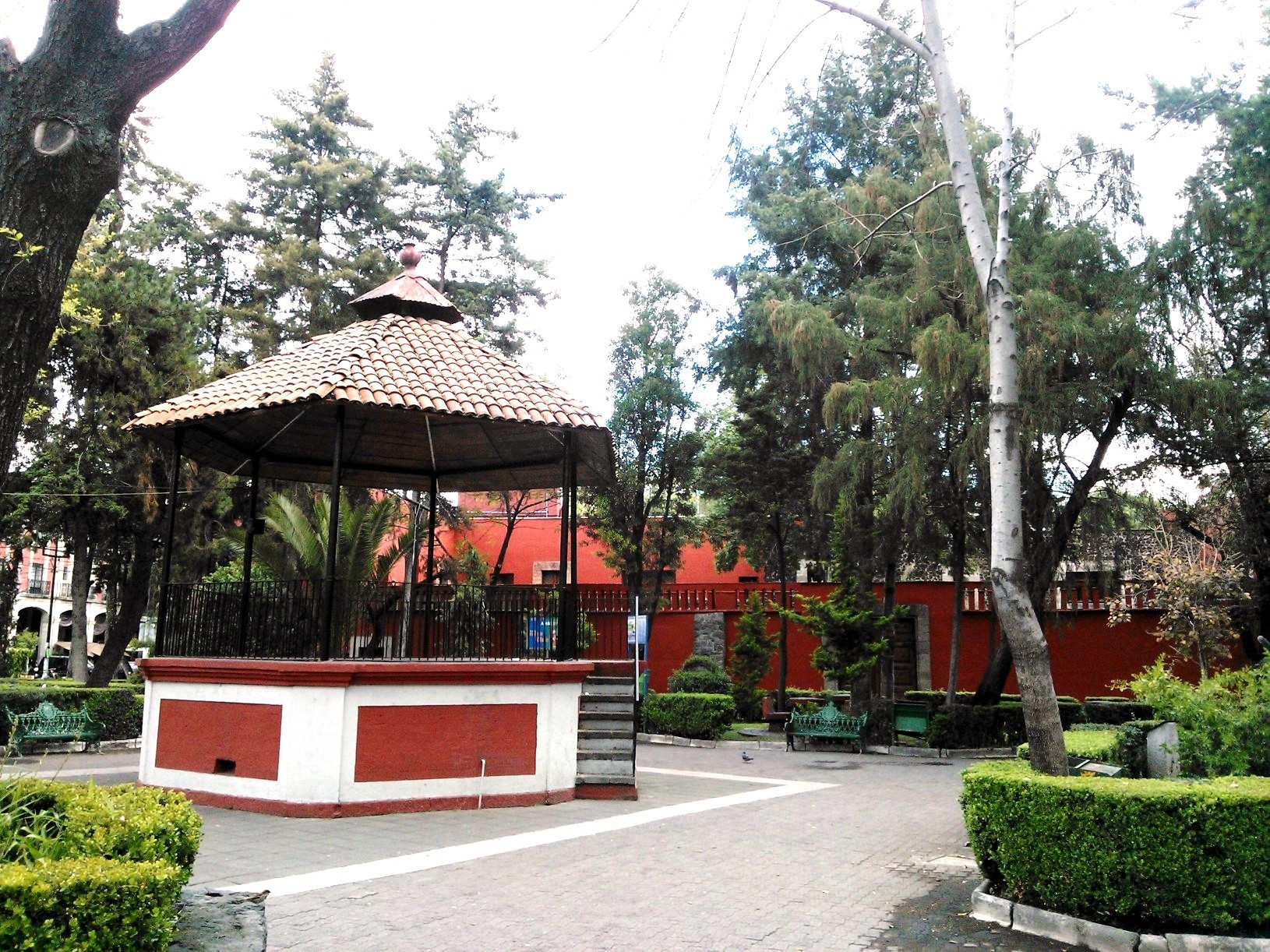|
Mixcoac
Mixcoac is an area of southern Mexico City which used to be a separate town and municipality within the Mexican Federal District until it was made part of Mexico City proper (the '' Departamento Central'' at the time) in 1928. Mixcoac consists of the '' colonias'' (official neighborhoods) of Nonoalco, San Juan, Extremadura Insurgentes, Mixcoac, and Insurgentes Mixcoac and is part of the borough of Benito Juárez. It is bounded by Avenida de los Insurgentes to the east and the Periférico freeway to the west, south of Colonia Nápoles and San Pedro de los Pinos. It is a designated ''Barrio Mágico'' ("magical neighborhood") of Mexico City. History The name "Mixcoac" comes from the Nahuatl language mixtli (cloud), coatl (serpent), cómo (in), and means "Place of the Cloud Serpent", alluding to the Milky Way and the god Mixcóatl. Before the Spanish conquest there was a small settlement on the edge of Lake Texcoco, the lake that surrounded the island city of Tenochtitlan ... [...More Info...] [...Related Items...] OR: [Wikipedia] [Google] [Baidu] |
Metro Mixcoac
Mixcoac is a station on Line 7 and Line 12 of the Mexico City Metro. The station serves both lines as a transfer station and as the northwestern terminus of Line 12. In 2019, the station had an average total ridership of 54,963 passengers per day. History The station opened on 19 December 1985 as part of the third stage of Line 7. In 2012, with the inauguration of Line 12, Mixcoac became a transfer station, as well as the temporary terminus of the mentioned line. An extension of Line 12 from Mixcoac to Observatorio is under construction, projected to be finished by 2020. By that time, Mixcoac will no longer work as the western terminus of Line 12. General information The station runs deep under Avenida Revolución, a main thoroughfare in Mexico City Mexico City ( es, link=no, Ciudad de México, ; abbr.: CDMX; Nahuatl: ''Altepetl Mexico'') is the capital city, capital and primate city, largest city of Mexico, and the List of North American cities by population, most popul ... [...More Info...] [...Related Items...] OR: [Wikipedia] [Google] [Baidu] |
Mexico City Metro
The Mexico City Metro ( es, Metro de la Ciudad de México) is a rapid transit system that serves the metropolitan area of Mexico City, including some municipalities in Mexico State. Operated by the Sistema de Transporte Colectivo (STC), it is the second largest metro system in North America after the New York City Subway. In 2019, the system served 1.655 billion passengers, the tenth highest ridership in the world. The inaugural STC Metro line was long, serving 16 stations, and opened to the public on 4 September 1969. The system has expanded since then in a series of fits and starts. , the system has 12 lines, serving 195 stations, and of route. Ten of the lines are rubber-tired. Instead of traditional steel wheels, they use pneumatic traction, which is quieter and rides smoother in Mexico City's unstable soils. The system survived the 1985 Mexico City earthquake. Of the STC Metro's 195 stations, 44 serve two or more lines (''correspondencias'' or transfer ... [...More Info...] [...Related Items...] OR: [Wikipedia] [Google] [Baidu] |
Mixcoac (archaeological Site)
Mixcoac from Nahuatl means "viper in the cloud" is an archaeological zone belonging to the Mexica (Aztec) culture. It was on the shores of Lake Texcoco and in its final stage was under the rule of Tenochtitlan. With the arrival of the Spanish conquistadors, the settlement was practically destroyed to its foundations, which are the only thing that survives of the architecture of the place and can be appreciated today in what is today the San Pedro de los Pinos neighborhood, on the corner of San Antonio avenue and Periférico, in Mexico City. The name Mixcoac, ''viper of the cloud'', could be understood as a representation of the celestial serpent or Milky Way. The occupation of this archaeological area is estimated to have occurred from 900 BC to 1521 AD. History The site was occupied and built by the Mexicas shortly before 1521. This is demonstrated by the aesthetics and style of pottery and the architecture of the buildings. The temple of Mixcoatl is a pyramid-shaped building t ... [...More Info...] [...Related Items...] OR: [Wikipedia] [Google] [Baidu] |
San Pedro De Los Pinos
San Pedro de los Pinos is a neighborhood located in center-west of Mexico City. Before being urbanized during the first half of the 20th century, the colonia was part of a vast farming area belonging to several ranches and haciendas. Location San Pedro de los Pinos is located in the Benito Juárez borough of Mexico City. The neighborhood is bordered by: *11 de abril street on the north, across which is Tacubaya, in the Miguel Hidalgo borough *Calle 2 street on the northwest, across which is Colonia 8 de agosto *Anillo Periférico on the west, across which is the Álvaro Obregón borough *Río Becerra on the south and east, across which is Santa María Nonoalco on the south, and Colonia Nápoles and Colonia Ampliación Nápoles on the east Description San Pedro de los Pinos is a mixed neighborhood with both residential and commercial buildings. Most of the residential buildings date back to the first half of the 20th century, though new apartment buildings are being built i ... [...More Info...] [...Related Items...] OR: [Wikipedia] [Google] [Baidu] |
Colegio La Salle Simón Bolívar
Colegio La Salle Simón Bolívar is a private school system in Mexico City. It has two campuses: the Galicia Campus in Colonia Insurgentes, Mixcoac, Benito Juárez Benito Pablo Juárez García (; 21 March 1806 – 18 July 1872) was a Mexican liberal politician and lawyer who served as the 26th president of Mexico from 1858 until his death in office in 1872. As a Zapotec, he was the first indigenous pre ... and the Mixcoac campus in Col. Florida, Mixcoac. The former has primary school and the latter has middle and senior high school. " Colegio La Salle Simón Bolívar. Retrieved on April 14, 2016. "Galicia #8 Col. Insurgentes Mixcoac C.P. 03920 México, D.F." and "Av. Río Mixcoac #275 Col. Florida C.P. 01030 México, D.F." References External links [...More Info...] [...Related Items...] OR: [Wikipedia] [Google] [Baidu] |
Simón Bolívar University (Mexico)
Simón Bolívar UniversityP&G Reclutamiento USBMéxico " Simon Bolivar University. Retrieved on April 14, 2016. "Av. Río Mixcoac No. 48 Col. Insurgentes Mixcoac" ( es, Universidad Simón Bolívar or USBMéxico) is a private university in , , . Currently, i ... [...More Info...] [...Related Items...] OR: [Wikipedia] [Google] [Baidu] |
Colegio Simón Bolívar (Simon Bolivar University)
Colegio Simón Bolívar (CSB) is a private school in Colonia Insurgentes, Mixcoac, Benito Juárez, Mexico City Mexico City ( es, link=no, Ciudad de México, ; abbr.: CDMX; Nahuatl: ''Altepetl Mexico'') is the capital city, capital and primate city, largest city of Mexico, and the List of North American cities by population, most populous city in North Amer .... It serves kindergarten through senior high school (''preparatoria''). ." Colegio Simón Bolívar. Retrieved on April 15, 2016. "Colegio Simón Bolívar Av. Río Mixcoac No. 125 Col. Insurgentes Mixcoac " It is affiliated with Simón Bolívar University (USB). References External links [...More Info...] [...Related Items...] OR: [Wikipedia] [Google] [Baidu] |
Central Department (Mexico)
The Central Department ( es, Departamento Central) was an administrative subdivision of the Mexican Federal District. It was formed in 1928 from the former municipalities of Mexico, Tacuba, Tacubaya and Mixcoac. In 1941, the '' delegación'' of General Anaya was merged with the Central Department to form Mexico City Mexico City ( es, link=no, Ciudad de México, ; abbr.: CDMX; Nahuatl: ''Altepetl Mexico'') is the capital city, capital and primate city, largest city of Mexico, and the List of North American cities by population, most populous city in North Amer .... Mexico City {{MexicoDistritoFederal-geo-stub ... [...More Info...] [...Related Items...] OR: [Wikipedia] [Google] [Baidu] |
Coyoacán
Coyoacán ( , ) is a borough (''demarcación territorial'') in Mexico City. The former village is now the borough's "historic center". The name comes from Nahuatl and most likely means "place of coyotes", when the Aztecs named a pre-Hispanic village on the southern shore of Lake Texcoco dominated by the Tepanec people. Against Aztec domination, these people welcomed Hernán Cortés and the Spanish, who used the area as a headquarters during the Spanish conquest of the Aztec Empire and made it the first capital of New Spain between 1521 and 1523. The village and later municipality of Coyoacán remained completely independent of Mexico City through the colonial period into the 19th century. In 1857, the area was incorporated into the then Federal District when this district was expanded. In 1928, the borough was created when the Federal District was divided into sixteen boroughs. The urban sprawl of Mexico City reached the borough in the mid-20th century, turning farms, former l ... [...More Info...] [...Related Items...] OR: [Wikipedia] [Google] [Baidu] |
Mixcóatl
Mixcoatl ( nah, Mixcōhuātl}, from mixtli "cloud" and cōātl "serpent"), or Camaxtle or Camaxtli, was the god of the hunt and identified with the Milky Way, the stars, and the heavens in several Mesoamerican cultures. He was the patron deity of the Otomi, the Chichimecs, and several groups that claimed descent from the Chichimecs. Under the name of Camaxtli, Mixcoatl was worshipped as the central deity of Huejotzingo and Tlaxcala. Representation Mixcoatl is represented with a black mask over his eyes and distinctive red and white pin stripes painted on his body. These features are shared with Tlahuizcalpanteuctli, the Lord of the Dawn, god of the morning star, as well as Itzpapalotl, goddess of infant mortality who was sometimes said to be his mother. Unlike Tlahuizcalpanteuctli, Mixcoatl can usually be distinguished by his hunting gear, which included a bow and arrows, and a net or basket for carrying dead game. Mythology Mixcoatl was one of four children of Tonacatecut ... [...More Info...] [...Related Items...] OR: [Wikipedia] [Google] [Baidu] |
Manacar
Manacar is a 22-story skyscraper (''Torre Manacar'', "Manacar Tower") and shopping center in the Insurgentes Mixcoac neighborhood of southern Mexico City at the intersection of the city's north-south artery, Avenida de los Insurgentes, and the Circuito Interior inner ring highway. It occupies the site of the former Cine Manacar cinema (1965–2013). The architect is the late Teodoro González de León. The total complex is The shopping center opened in July, 2017. It had 74 stores at that time with of gross leasable area. There are 20 fashion stores, 7 restaurants, 20 food options and kiosks with a parking garage for 2700 cars on 11 levels. Anchors include Cinemex Premium, H&M, Forever 21, Massimo Dutti, Tommy Hilfiger, iShop/Mixup, Innovasport, Sephora, Sunglass Hut, Scappino, Benetton, Calzedonia and American Eagle Outfitters, while restaurants include Chili's Chili's Grill & Bar is an American casual dining restaurant chain. The company was founded by Larry ... [...More Info...] [...Related Items...] OR: [Wikipedia] [Google] [Baidu] |
Circuito Interior
The Circuito Interior Bicentenario ("Bicentennial Inner Loop") or more commonly, Circuito Interior or even more simply Circuito, is a 42-km-long (26 mi) urban freeway (in parts) and at-grade boulevard (in others), forming a loop around the central neighborhoods of Mexico City. It was built starting in 1961. The Circuito Interior received the appellation ''Bicentenario'' (Bicentennial) after a renovation that took place in 2010, Mexico's bicentennial year. History In 1951, 8 km (5 mi) of the Río Consulado river's course between the Monumento a la Raza and Mexico City Airport was put underground and the route was opened as a highway. Regent Ernesto P. Uruchurtu decided upon the routing underground of more stretches of the rivers Río Consulado, Río Churubusco and Río de la Piedad. An 18-km (11.2 mi) route was completed in 1961. In 1974, the Circuito was extended to the south and west, which according to sources at the time resolved 50% of the intersections with severe tra ... [...More Info...] [...Related Items...] OR: [Wikipedia] [Google] [Baidu] |



